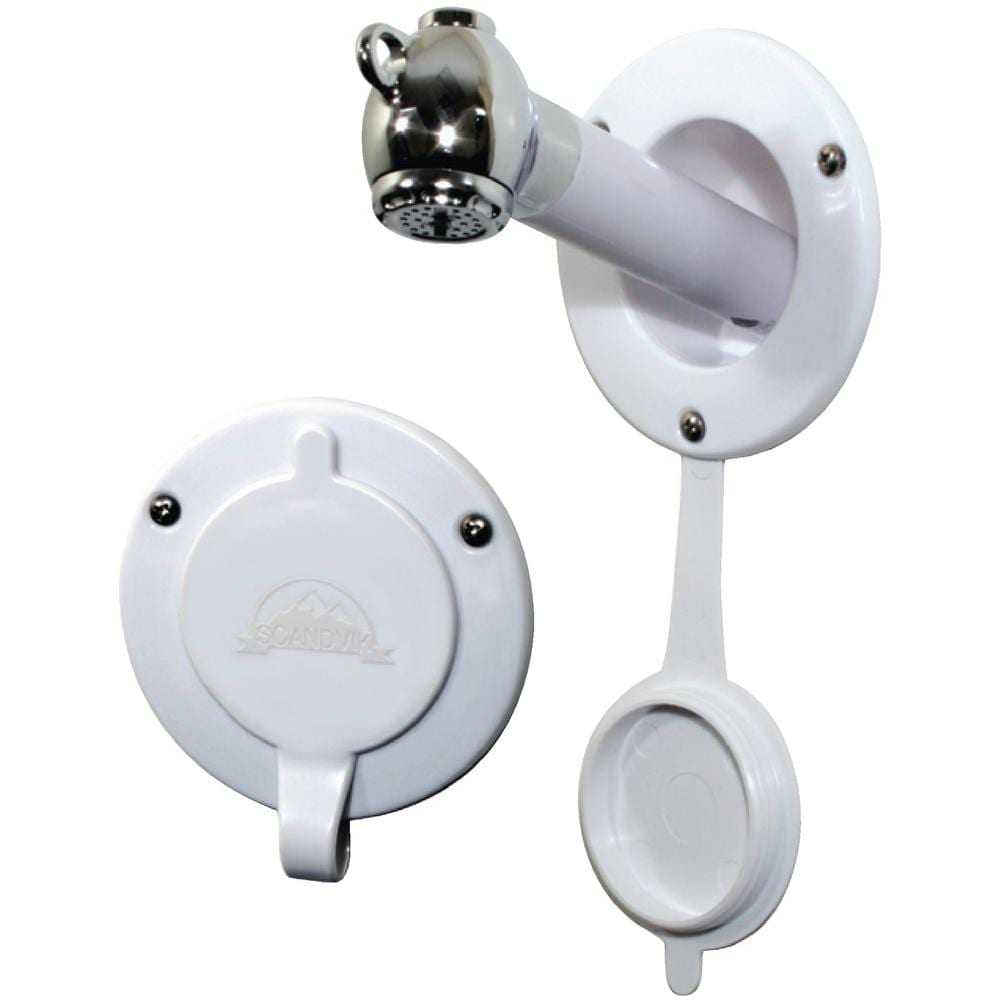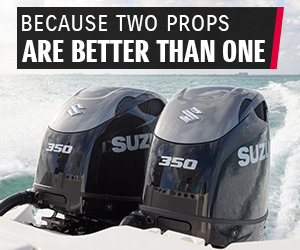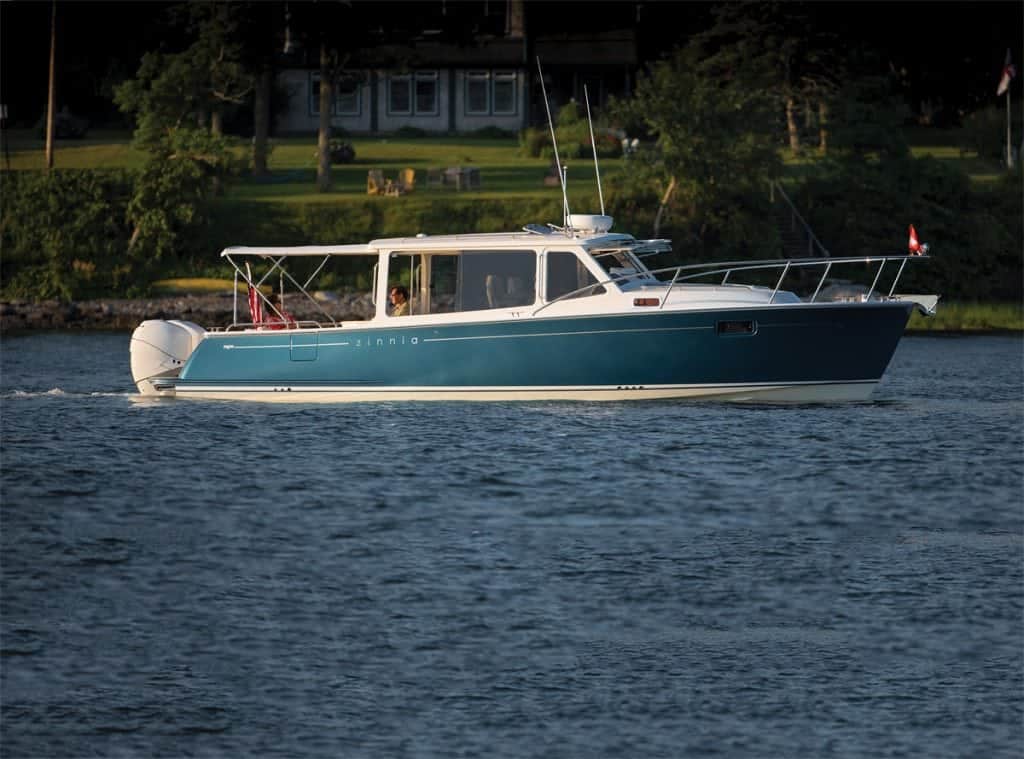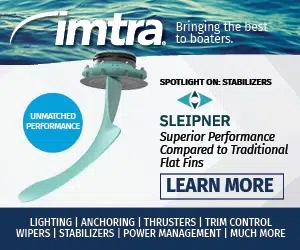Time for a maintenance check. Don’t skip these oft-forgotten items
There’s a lot of terrestrial-based wisdom that just doesn’t ring true when it comes to boats. “Out of sight, out of mind,” “What you don’t know can’t hurt you” and “Let sleeping dogs lie” are all perfect examples of advice not to heed when planning your boat’s maintenance. In an effort to protect you from old wives and their tales, here are three often neglected items that can ruin your boating day quicker than stepping on a crack can cause you to cry over spilled milk. Just do a maintenance check.
Maintenance Check #1: Anchor rode and connections
No matter what you enjoy doing on the water, there’s one need all boaters have in common: the ability to anchor safely and securely. Unfortunately, the other thing they often have in common is poorly maintained or unserviceable ground tackle.
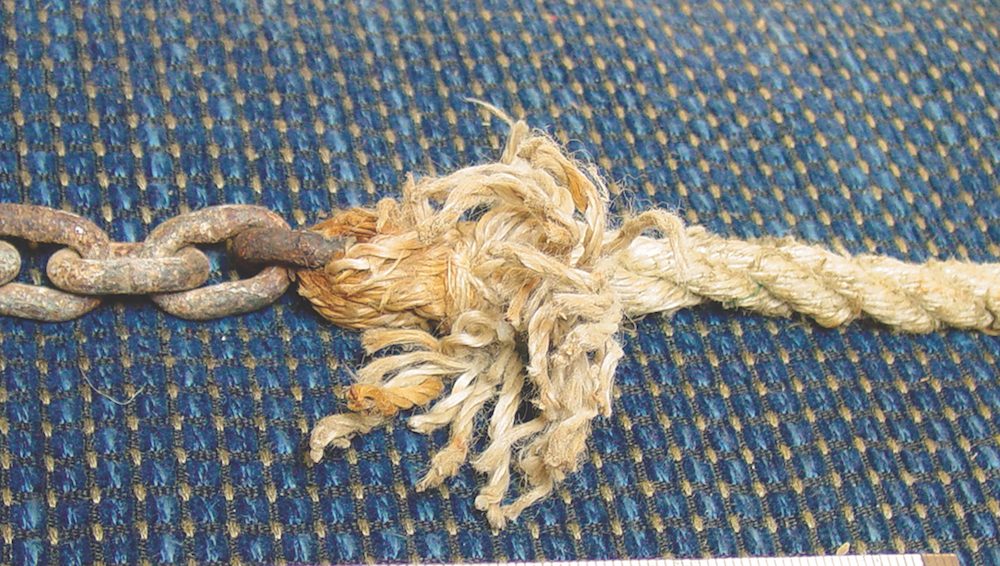
While the anchor typically enjoys a place of prominence at the bow, the anchor rode is relegated to the dark, dank recesses of the anchor locker. In a nutshell, its purpose is to connect the boat to the anchor.
Most boats use a combination rode, which is simply a rope rode with a length of chain between it and the anchor. The chain protects the rope portion of the rode from chafe along rough seabeds and adds weight that increases horizontal pull and helps the anchor remain set. Three-strand nylon is most commonly used for anchor rode. It’s strong, provides more elasticity than a braided line (which absorb the sudden loads and jerks of a bouncing boat), is more easily spliced, and is less expensive.
Your anchoring system is only as strong as its weakest component, which includes not only the rode, but also shackles, splices, chains, mooring bitts, cleats, and, in short, any gear used to secure your boat while at anchor. Proper maintenance includes inspection of these items as well as pulling the rode from the anchor locker and inspecting it at least annually. Check rope rodes for wear, hard spots, cut strands, aging, discoloration, etc. Chafe is rope’s worst enemy, so you’ll also want to inspect hawseholes, chocks, cleats, and windlasses for burrs, sharp edges or anything else that can cause rope damage.
Maintenance Check #2: Stuffing box
Stuffing boxes (aka packing glands) are victims of their own reliability. They carry on so well with such little attention that many boat owners don’t realize they need regularly scheduled maintenance.
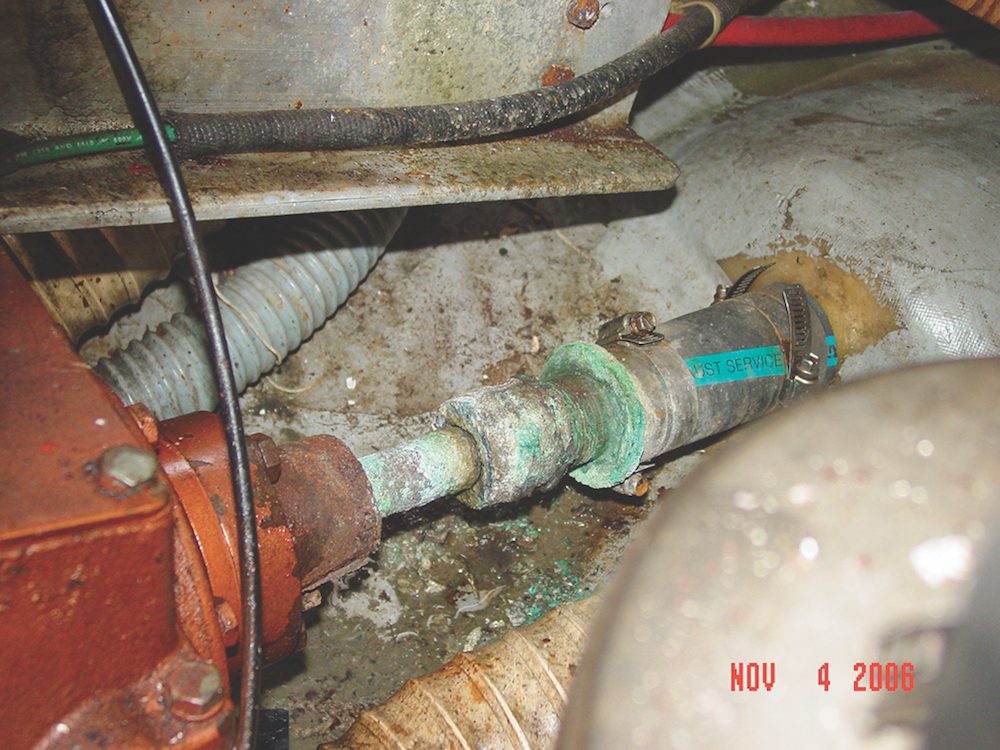
The purpose of the stuffing box is to allow the propeller shaft to exit the hull while keeping water out. The shaft is sealed by compressing packing material against it, most often by using a hollow nut that screws onto the inboard side of the shaft tube or a tightening arrangement that uses a plate secured by nuts and studs on either side of the shaft. The more you tighten either type of gland, the more the packing material gets compressed against the shaft. Most packing consists of a square plaited material and comes either as traditional greased (or waxed) flax or a more modern version impregnated with Teflon.
Water helps lubricate the packing material, so it’s okay for a stuffing box to leak a few drips (three to four per minute) while the vessel is underway. More than that amount (say 10 drops per minute) or any drips while the shaft isn’t turning indicate the need for maintenance. A stuffing box leak can cause everything from corrosion (the spinning shaft slings excess water all over the engine compartment) to sinkings, particularly if the boat is left unattended in the water for long periods of time.
Maintenance Check #3: Packing Material
Packing material hardens over time (as the lubricant dries out) and gets worn away by shaft rotation, allowing water to pass and enter the vessel. When this happens, most boaters simply tighten the packing gland to compress the packing material and stop or reduce the leak. This works to a point; however, as the packing gets smaller, it also gets harder. Keep compressing it, and it will eventually score the propeller shaft, which will then have to be replaced before the stuffing box will seal properly.
The simplest answer here is to replace the packing material on a regular basis. This bit of routine maintenance should only take about 30 minutes and normally costs less for materials than you’d spend on a mocha-frappu-latte-whatever and a free-range muffin. How often you repack typically depends on the number of hours your boat is used. As the vessel has to be hauled, many owners simply repack annually as part of their haul-out or spring commissioning routine.
Maintenance Check #4: Fuel tank fill hose
You’d be hard-pressed to come up with a more out-of-sight, out-of-mind item than your fuel tank fill hose. Fill hoses are attached to the underside of the fuel fill fitting, connecting it to your fuel tank.
All hose has a limited lifespan, and fuel fill hose is no exception. Recommended replacement timeframes will vary between fuel hose manufacturers, but some call for replacement as often as every five years. The American Boat and Yacht Council standards also call for flexible fuel fill hose to be double clamped at each end with marine-grade stainless steel (if there is sufficient hose barb to allow it) as well as marked with the manufacturer’s name or trademark, year of manufacture and application on the outermost cover.
Access and inspect fuel tank fill hoses regularly for leaks and deterioration as part of your vessel’s maintenance program. Check that each end of the hose is double clamped and that the clamps are tight and free from corrosion. Replace older hose (regardless of appearance) as per the manufacturer’s recommendations.
Story and photos by Frank Lanier, Southern Boating September 2018



